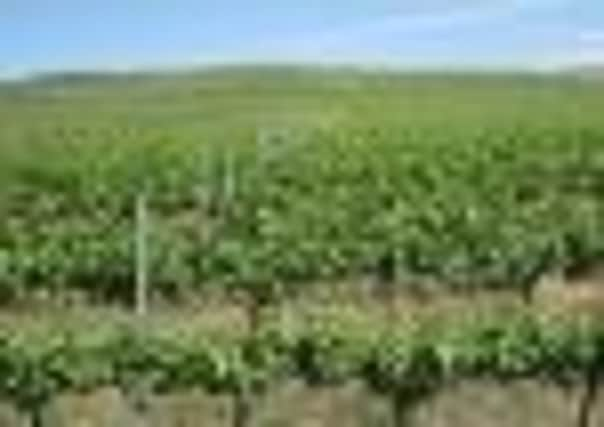Hungary for success


Titles to the land had been lost in many cases and relatives had to be traced across Europe and around the world to establish exactly who owned what. Now, more than two decades on from those dramatic times, the wine scene in Eastern Europe has re-established itself. In Georgia, the small strips of land which were allocated to individual families have been amalgamated into decent-sized farms. In Romania, whole hillsides have been replanted with healthy vines of varieties that consumers want to buy and in Hungary new wineries have been built to produce fresher, more commercial styles of wine. It has taken time, investment, and in many cases the vision of a small group of people to turn around the local wine industry.
Hungary, in particular, has coped well with its change in circumstances and now most of our supermarkets have a range of good value white wines which often challenge pronunciation skills more than the wallet. Along with a bright and breezy Sauvignon Blanc (Waitrose £5.99), there are wines such as the light, aromatic Czerszegi Fuszeres (Morrisons £4.59), a citrus and peach-flavoured Irsai Oliver (Morrisons £4.69) and a minerally Dry Furmint (Majestic £9.99) taking their place on the shelves. All are recommended, particularly for drinking as spring turns to summer.
Advertisement
Hide AdAdvertisement
Hide AdRed wines from Hungary present more of a challenge. The old powerful Bull’s Blood made from a mix of local grapes is still occasionally found, but it seems tough and one-dimensional these days. Now local retailer Barrels and Bottles (01246 453399) has discovered a range of varietal red wines which are breaking new ground in terms of quality and style. They come from Villány in the south of Hungary, which is one of the oldest wine producing regions in the country. Here, on about the same latitude as Bordeaux, protected from the north by the Villányi mountains and with a light Mediterranean influence from the south, the stony, volcanic soil produces deep flavours and ripe tannins.
An added advantage is that international grape varieties Cabernet Sauvignon, Cabernet Franc and Merlot are the major red grapes in this region, which saves having to learn a completely new set of grape names.
Of the five wines in the range, I recommend four.
Teleki Cabernet Sauvignon 2008 has deep, blackcurrant and raisiny fruit with smooth ripe tannins and a long finish (16.5 out of 20). The Cabernet Franc 2008 has more lively flavours, with inky plummy fruit and a green, leafy streak running through to the finish. This is structured to go well with food (17 out of 20). Teleki Merlot is soft and velvety with warm, rounded blackberry fruit but is slightly short and doesn’t have the complexity of the other wines (15.5/20) while the blended Teleki Merlot Cabernet ,Sauvignon 2008 is a happy combination of blackcurrant fruit and structure (16.5).
The only wine in the range which seemed to have held on to old-fashioned East European winemaking styles is the most expensive, the Zweigelt which is a blend of unnamed grape varieties, oak aged and with an astonishingly high level of residual sugar. This comes with a blue label and is to be avoided at all costs. All Teleki Hungarian red wines retail at Barrels and Bottles in Sheepbridge, Chesterfield at around £11 and are also available at Lewis and Cooper in Northallerton (01609 772880) and Lindley Fine Wines in Huddersfield (01484 653888).
Advertisement
Hide AdAdvertisement
Hide AdAlso from Eastern Europe, I am delighted to see the Wolfhouse range of wines gain a listing at Co-operative stores. These come from the Cramele Recas winery in western Romania which I visited last year and it was the highlight of the trip since it produces good commercial-quality wines with a sensible price tag.
This winery is close to Timisoara, a boom-town close to the Hungarian border where new hi-tech industries have moved in from western Europe, taking advantage of EU funds and cheap local labour. Oddly, the winery is run by a man from Bristol, Philip Cox, who headed out to Romania in the early days of freedom and who now presides over 600 hectares of vineyard and a thriving winery which also seems to have tapped into EU funds, judging by the many signs around the site.
Meticulous planting on iron-rich slopes, even on revived old terraces is now producing quality grapes and the wines are made by an Australian who splits his time between Oz and Romania. The large winery can be run by computer, even when the winemaker is several thousand miles away, so costs are kept low.
Wolfhouse Chardonnay 2010 is bright with melon and pineapple fruit with just a touch of newly fermented bubblegum.
Advertisement
Hide AdAdvertisement
Hide AdThe rosé is dry with lively strawberry fruit and a soft finish, while the red is packed with redcurrant and dark cherry fruit with easy-drinking tannins. All wines will normally retail at £4.99 but they are on offer at two bottles for £8 until April 19. They are certainly good enough for sunshine drinking and I would be happy to drink the red with any Monday to Thursday supper. Apart from the sweet wines of Tokaji, many Eastern European wines have disappeared from our shelves in recent years but there is huge potential for them to move back in.
With the right investment behind them and a need to sell, wines from Romania and Hungary could be the New World of the future, combining Northern European flavours with tremendous value.
Now is a good time to catch them.